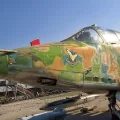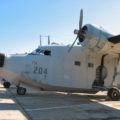
NASA X-38 | |
|---|---|
| Country | USA |
| Role | Return vehicle |
| Program | 1995–2002 |
| Built | Unknow |
The X-38 was an experimental re-entry vehicle designed by NASA to research a possible emergency crew return vehicle (CRV) for the International Space Station (ISS). The 1995–2002 program also developed concepts for a crew return vehicle design that could be modified for other uses, such as a possible joint U.S. and international human spacecraft that could be launched on the French Ariane 5 booster. The program would eventually develop a total of three test prototype flight demonstrators for the proposed Crew Return Vehicle, each having incremental improvements on its predecessor. All three were wingless lifting body vehicles used in drop tests. The X-38 program was cancelled in 2002 due to budget cuts.
Source: NASA X-38 on Wikipedia
| NASA X-38 Crew Return Vehicle Walk Around | |
|---|---|
| Photographers | Vladimir Yakubov and John Heck |
| Localisation | Strategic Air and Space Museum, Ashland |
| Photos | 55 |
Related kits:
Find kits on eBay:
See also:
The NASA X-38 was a prototype crew return vehicle (CRV) designed to provide a safe and reliable way for astronauts to return to Earth from the International Space Station (ISS). The X-38 was based on a lifting body concept, which means that it used its shape to generate lift as it reentered the atmosphere. The X-38 had a wingless, wedge-shaped body with a flat bottom and curved top. It was equipped with a steerable parafoil parachute that allowed it to glide and land on a runway.
The X-38 program began in 1995 as a joint effort between NASA and the European Space Agency (ESA). The goal was to develop a low-cost and reusable CRV that could be launched from the ISS using a standard docking port. The X-38 would carry up to seven crew members and provide them with life support, communication, navigation, and emergency systems. The X-38 would also serve as a backup for the Space Shuttle or the Soyuz spacecraft in case of an emergency.
The X-38 underwent several tests and demonstrations between 1997 and 2002. NASA built four atmospheric test vehicles (V-131, V-132, V-131R, and V-133) and one orbital test vehicle (V-201). The atmospheric test vehicles were dropped from a B-52 aircraft at high altitudes and performed various maneuvers and landings. The orbital test vehicle was planned to be launched on a Space Shuttle mission in 2003 and docked with the ISS. However, the X-38 program was cancelled in 2002 due to budget cuts and shifting priorities. NASA decided to focus on developing the Orion spacecraft as the next-generation CRV for the ISS and beyond.
Views : 774











